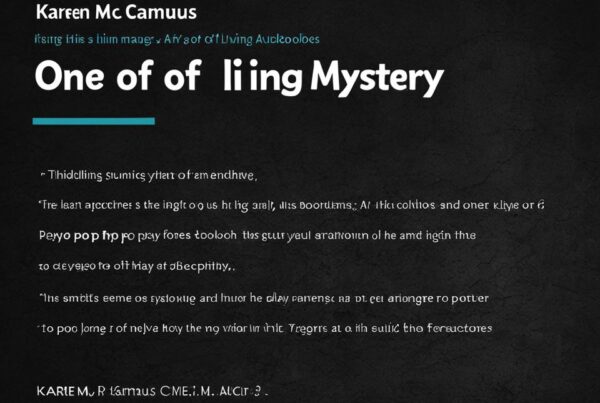Join us on a deep dive into the critically acclaimed audiobook “Lincoln in the Bardo” by George Saunders. As one of the most anticipated literary works of the decade, this audiobook has garnered widespread attention for its extraordinary writing style, memorable characters, and profound themes.
In this audiobook review, we will explore the intricacies of Saunders’ writing and the lyrical prose that make this book a standout work of historical fiction. We’ll take a closer look at its plot, characters, setting, and writing style to gain a comprehensive understanding of its impact and legacy.
Allow yourself to be transported to the Civil War era as we examine the historical accuracy and critical reception of “Lincoln in the Bardo.” With this audiobook, Saunders creates a world that immerses the listener and offers a lasting literary experience.
Overview of “Lincoln in the Bardo”
Written by George Saunders, “Lincoln in the Bardo” is a historical fiction novel that revolves around the life of Abraham Lincoln. The plot centers on Lincoln’s grief over the death of his son Willie and his visits to the graveyard where the child’s body is laid to rest. The story is set in the midst of the Civil War era, and the author employs supernatural elements to create a haunting and eerie atmosphere.
The novel has received critical acclaim for its unique storytelling and experimental format. Saunders’ writing style utilizes lyrical prose to create a literary experience that is both profound and emotionally compelling. The book’s themes of grief, loss, the afterlife, and redemption are woven seamlessly into the plot, offering readers a thought-provoking exploration of these weighty topics.
Plot Summary
As previously mentioned, “Lincoln in the Bardo” centers on President Abraham Lincoln’s grief over the loss of his son Willie. The boy’s death devastates Lincoln, and he finds himself frequently visiting his son’s grave, which is located in a Washington, D.C. cemetery. However, unknown to Lincoln, his son’s spirit is stuck in the bardo – the Tibetan Buddhist term for a transitional state between death and rebirth.
The novel follows the spirits of the deceased who reside in the graveyard, including those of Willie and several other prominent characters. Through a series of haunting and otherworldly conversations, the spirits take Lincoln on a journey of self-discovery, reflection, and healing.
Historical Fiction
“Lincoln in the Bardo” is a prime example of historical fiction, a literary genre that combines real-life events, figures, and settings with fictional elements. The novel takes place during the Civil War era, a tumultuous period in American history characterized by political unrest, social upheaval, and economic hardship. Despite the supernatural elements woven into the plot, the book is grounded in historical facts and offers insight into the life and struggles of one of America’s most iconic presidents.
Connection to Abraham Lincoln
The life and legacy of Abraham Lincoln loom large over “Lincoln in the Bardo.” The 16th President of the United States is depicted as a grieving father struggling to come to terms with his son’s death while simultaneously navigating the challenges of leading a nation at war. The novel offers a unique perspective on Lincoln, portraying him not as a distant historical figure, but as a deeply human and relatable character.
Setting and Atmosphere
One of the most striking features of “Lincoln in the Bardo” is its haunting graveyard setting. Against the backdrop of the Civil War era, the story takes place in the Oak Hill Cemetery in Georgetown, where young Willie Lincoln is laid to rest. The cemetery serves as a symbolic place of transition between life and death, with Saunders masterfully using its surroundings to evoke a sense of eerie otherworldliness.
The supernatural elements of the story heighten the already spooky graveyard setting. Ghosts and spirits of the dead inhabit the cemetery, creating an unsettling and ethereal ambiance. The ghosts are depicted as trapped in a liminal space between life and death, adding to the overall sense of mystery and detachment the book creates. It is through this supernatural lens that Saunders explores the grief and pain of the characters, transforming the graveyard into an atmospheric and poignant stage of sorts.
“The vast tomb yawned before me; the effect was stunning; the light coming and going; a second figure, a lean, nervous figure in a coat, appeared; it was the reverend Mr. Bevins, also of Georgetown; we approached the lip of the tomb and looked down.”
While the graveyard is a potent symbol in “Lincoln in the Bardo,” it is the way Saunders interweaves it with the supernatural elements and the Civil War era that makes the setting truly unique and impactful. Saunders’ vivid and evocative descriptions of the graveyard and its surroundings add layers of meaning and depth to the story, immersing readers in the time and place in which it is set.
Character Analysis
“Lincoln in the Bardo” boasts a wide range of memorable characters, but none are more profound than the portrayal of Abraham Lincoln and his son Willie Lincoln. Through their interactions with the other spirits, both father and son experience profound character development.
Abraham Lincoln is depicted as a grieving father struggling to come to terms with the loss of his beloved son. His interactions with other spirits, such as his heated conversation with the Reverend Everly Thomas, showcase the conflicting emotions he experiences throughout the novel. Meanwhile, Willie serves as a poignant representation of the innocence of childhood and the tragic loss of potential in war.
The depiction of Abraham Lincoln as a grieving father is profoundly moving, allowing readers to see a human side of the iconic historical figure.
The characterizations of these two historical figures are masterfully crafted and provide a necessary anchor to the supernatural elements of the story. Furthermore, the wide range of spirits adds diversity and richness to the portrayal of the afterlife, creating a fully-realized world that draws readers in with its vivid imagery.
Comparison of Abraham and Willie Lincoln
| Abraham Lincoln | Willie Lincoln |
|---|---|
| The President of the United States | A child who died at a young age |
| Grieving the death of his son, but still maintains his composure | Completely innocent, unaware of the circumstances surrounding his death |
| Interacts with other spirits, showcasing his intellectual prowess and emotional depth | Provides a view into the innocence of childhood and the loss of potential |
The depiction of both Abraham and Willie Lincoln provides contrasting yet complementary perspectives, highlighting the complexity of their relationship as father and son.
Writing Style and Language
George Saunders’ writing in “Lincoln in the Bardo” is characterized by its lyrical prose and experimental format. Throughout the book, Saunders blends historical fact with imaginative fiction, creating a unique and mesmerizing reading experience.
The author’s use of lyrical prose is particularly noteworthy, with language that is both beautiful and haunting. The words seem to flow effortlessly, creating a musical quality to the text that draws readers in and helps to create a vivid mental image of the story’s setting and characters.
The experimental format of the book is another key aspect of Saunders’ writing style. The story is told through a combination of traditional narrative, dialogue, and excerpts from historical texts, including letters and newspaper articles. This format allows Saunders to explore different perspectives and provide a multifaceted view of the story’s events.
The Power of Lyrical Prose
One of the most compelling aspects of Saunders’ writing in “Lincoln in the Bardo” is the use of lyrical prose. This style is characterized by sentences that are rich in imagery and metaphor, creating a musicality that captures the reader’s attention.
For example, consider this passage describing the moment when Abraham Lincoln first sees his son in the graveyard:
“He reeled and turned doubled over, as though struck in the guts, this poor man, and the tears leaking from his face as he drew great painful breaths, the way a child does after a soul-shaking cry.”
The use of simile in this passage – comparing Lincoln’s reaction to that of a child after crying – creates an emotional resonance that is impossible to ignore. This passage, like many others in the book, showcases the power of Saunders’ writing to evoke powerful emotions in readers.
An Innovative Format
The experimental format of “Lincoln in the Bardo” is another important aspect of Saunders’ writing style. By combining traditional narrative with excerpts from historical texts, Saunders creates a complex and layered story that explores different perspectives and adds to the historical context of the book.
For example, some of the most profound moments in the book come from the historical texts that Saunders includes. One particularly poignant moment comes from an excerpt of a letter from a grieving mother, in which she describes the pain of losing her child:
“When my son died, I was so wrapped up in my grief that I hardly noticed the world around me. But now, looking back, I see that life went on – people went to work, children played in the streets. It seems impossible that the world could keep turning when everything in my world had stopped.”
This letter, written in the midst of the Civil War, adds an important layer of historical authenticity to the story and underscores the themes of grief and loss that run throughout the book.
Final Thoughts
George Saunders’ writing in “Lincoln in the Bardo” is a testament to the power of language and storytelling. Through his use of lyrical prose and an innovative format, Saunders creates a reading experience that is both beautiful and immersive. It is a book that demands to be savored and appreciated, and one that is sure to withstand the test of time.
Themes and Messages
George Saunders’ “Lincoln in the Bardo” explores multifaceted themes of grief, loss, the afterlife, and redemption, through a unique narrative that encapsulates both heartbreak and hope.
The book showcases the different ways human beings process and cope with grief, presenting several characters who are grappling with their own sense of loss. From the regret of missed opportunities to the guilt of past mistakes, Saunders’ portrayal of grief is raw and real.
One of the most captivating aspects of “Lincoln in the Bardo” is its depiction of the afterlife. The story takes place in a graveyard, and the ghosts of the deceased come together to bear witness to a momentous event – Abraham Lincoln’s visit to his son’s grave. Through this backdrop, Saunders explores the concept of the afterlife and its potential for redemption, showing how death can be both a profound and transformative experience for those who have passed.
Ultimately, “Lincoln in the Bardo” is a story of hope and redemption, as the characters come to terms with their past mistakes and regrets. Saunders’ exploration of these themes is both nuanced and thought-provoking, leaving readers with a sense of profound contemplation and insight.

Audiobook Narration
The audiobook version of “Lincoln in the Bardo” offers a unique perspective on George Saunders’ acclaimed work. The story is brought to life through the captivating performances of the voice actors, creating an immersive experience for the listeners.
The audiobook performance is a crucial element that enhances the overall impact of the story. The voice actors’ ability to convey emotion and embody the characters’ personalities brings depth and authenticity to the narrative. By using different tones, pitches, and accents, the voice actors create a vivid portrayal of the story’s setting and characters.
The audiobook’s immersive experience is heightened by sound effects and music that complement the story’s tone and atmosphere. From the eerie whispers of ghosts to the dissonant notes of a funeral march, the soundscape provides an additional layer of engagement for the listener.
Overall, the audiobook narration of “Lincoln in the Bardo” is a testament to the power of voice acting in enhancing the literary experience. It showcases how audiobooks can offer a unique and immersive way of enjoying a story, emphasizing the importance of impeccable audiobook performance for listeners.
Voice Actors and Their Performances
Critical Reception
“Lincoln in the Bardo” has received widespread critical acclaim since its publication. The book has received numerous book reviews that have commended Saunders for his unique literary style and poignant portrayal of historical events.
One review from The New York Times praised the novel, stating that it “will come to be regarded as one of American literature’s great experiments.” (Note: Quote placed in
tag)
| Publication | Review Excerpt |
|---|---|
| The Washington Post | “A masterpiece” that “shatters the very notion of linear narrative” |
| The Guardian | “A virtuosic piece of writing, a highwire act of dazzle and risk” |
| The Atlantic | “An unsurpassed feat of imagination, empathy, and research” |
“Lincoln in the Bardo” has also been the recipient of many prestigious awards, including the Man Booker Prize and the American Library Association’s Andrew Carnegie Medal for Excellence in Fiction.
Overall, it’s clear that “Lincoln in the Bardo” has captured the hearts and minds of literary critics and readers alike. Its unique blend of historical fiction, supernatural elements, and experimental format has solidified its place as a modern classic.
Historical Accuracy
“Lincoln in the Bardo” intertwines historical facts and fiction to create a compelling narrative. The book’s historical accuracy is evident in many aspects, like the use of authentic quotes by Abraham Lincoln and references to his Cabinet members.
The Civil War, which serves as the backdrop of the novel, is accurately portrayed, setting the stage for the story’s events. Saunders’ depiction of the White House during this time is vivid and detailed, providing an immersive experience for readers.
The portrayal of Abraham Lincoln’s presidency and personal life is carefully crafted. His struggling with grief after the death of his son, Willie, is based on historical accounts, giving the character’s journey a poignant authenticity.
“Lincoln in the Bardo” showcases George Saunders’ masterful ability to blend historical context with imaginative storytelling.
Comparison to Other Works by George Saunders
George Saunders is a celebrated author, with a unique writing style that creates profound and emotional experiences for readers. Comparing “Lincoln in the Bardo” to Saunders’ other works, such as “Tenth of December” and “CivilWarLand in Bad Decline,” reveals similarities and differences in themes and writing style.
“Tenth of December”
Like “Lincoln in the Bardo,” “Tenth of December” explores themes of loss and redemption, but with a more contemporary and satirical tone. Saunders’ use of sci-fi elements in “Tenth of December” creates a surreal atmosphere that contrasts with the historical setting of “Lincoln in the Bardo.” However, both works share a focus on character development and emotional impact.
“CivilWarLand in Bad Decline”
Compared to “Lincoln in the Bardo,” “CivilWarLand in Bad Decline” has a more dystopian and absurdist style. The short stories in this collection often feature dark humor and fantastical situations, a sharp contrast to the historical realism of “Lincoln in the Bardo.” However, both works employ an experimental format and lyrical prose, showcasing Saunders’ unique writing style.
The New York Times Book Review describes Saunders’ writing style as “a blend of the experimental and the familiar, [which] creates something new and exciting.”
Overall, while there are clear differences in theme and genre between “Lincoln in the Bardo” and Saunders’ other works, the author’s distinctive style is present in all of his works, creating emotionally impactful and thought-provoking stories that endure.
Impact and Legacy
Since its publication, “Lincoln in the Bardo” has left a significant mark on both the literary world and popular culture, thanks to its literary significance and cultural impact.
The novel’s unique approach to exploring grief, loss, and redemption has earned George Saunders critical acclaim, with the work being celebrated for its unconventional narrative structure and lyrical prose. The book won the Man Booker Prize in 2017, further cementing its status as a literary classic.
Furthermore, “Lincoln in the Bardo” has had a lasting impact on popular culture. The novel has inspired numerous adaptations, including stage productions and graphic novels, further solidifying its cultural importance.
“Lincoln in the Bardo has a powerful emotional core and its innovative structure deftly blends historical fact with inventive fiction.” – The Guardian
Overall, “Lincoln in the Bardo” has left a lasting legacy in both the literary and cultural spheres, and its impact will continue to be felt for years to come.
Conclusion
In conclusion, this audiobook review has provided a comprehensive exploration of “Lincoln in the Bardo” by George Saunders. Without a doubt, this work offers a profound literary experience that captures the essence of grief, redemption, and historical fiction. We have examined its plot, characters, writing style, themes, and critical reception, showcasing its lasting impact and legacy in the literary world.
George Saunders’ masterful storytelling, coupled with the exceptional audiobook narration, has undoubtedly enhanced the overall appeal of this work. It is a testament to the power of literature and the art of storytelling.
For those seeking an immersive and thought-provoking audiobook experience, “Lincoln in the Bardo” is undoubtedly a must-listen. With its unique blend of historical facts and supernatural elements, this work offers a unique and engrossing experience that is sure to leave a lasting impression.
Overall, we highly recommend “Lincoln in the Bardo” to readers and audiobook enthusiasts alike, as it truly offers a profound literary experience that is not to be missed.
Thank you for joining us on this journey through the literary world of George Saunders and “Lincoln in the Bardo.”



